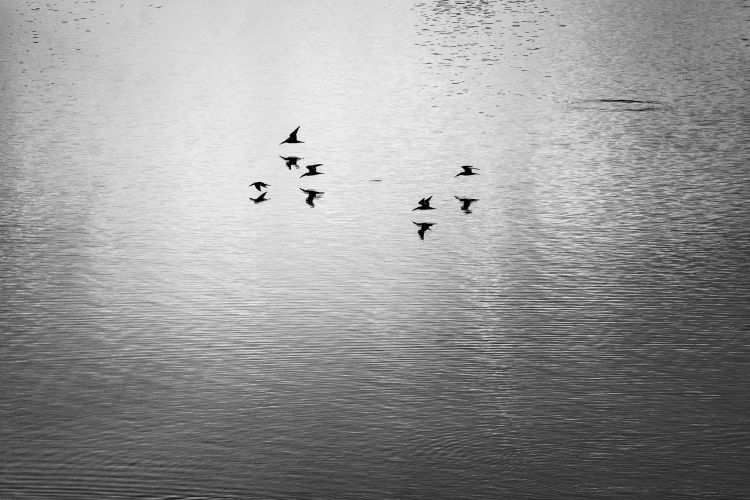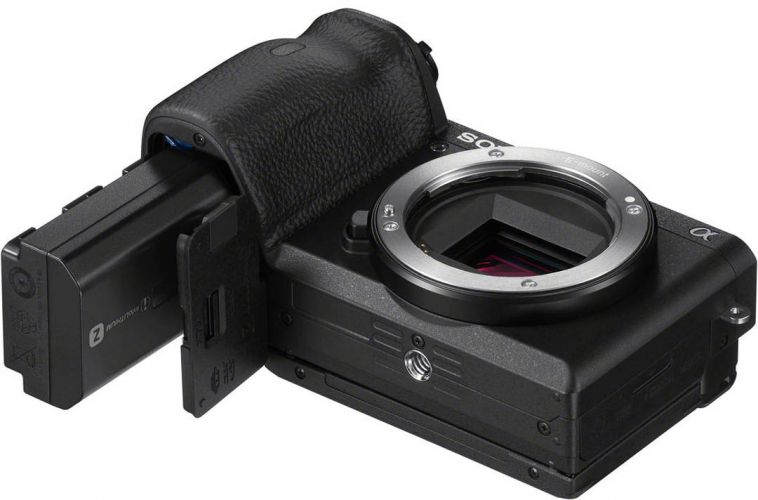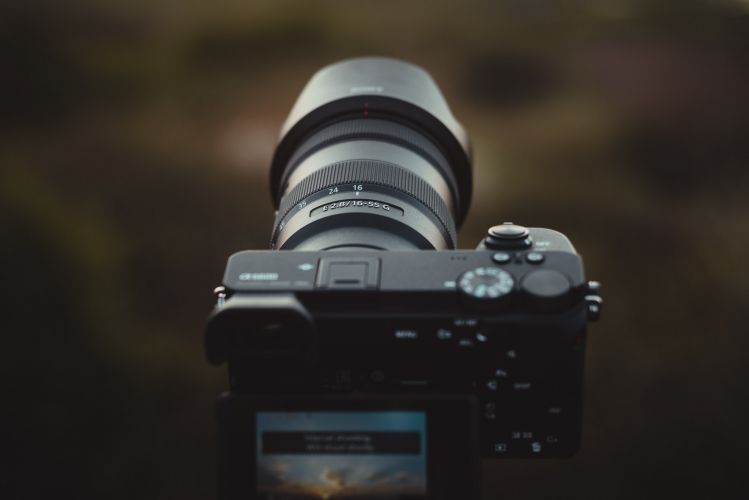
Sony’s A6000-series has been a very popular line of cameras, but their earlier models didn’t really attract us very much. Why? Because most of us were already DSLR owners, and back in the early days of mirrorless, there were still too many drawbacks for us as professional photographers. There was poor battery life, unreliable autofocus, and generally not the same level of responsiveness and speed that we could get from a similarly priced DSLR from 5+ years ago…
Now, things have definitely changed! Sony announced the A6600 about a year ago, and it is the current top-of-the-line camera in Sony’s A6x00 lineup. With this sixth camera, Sony has added an impressive battery, (indeed, one of the best in the whole mirrorless market) as well as one of the best autofocus systems of any mirrorless camera.
Other than that, at first glance, the A6600 appears to be quite similar to the original, six-year-old A6000. So, what else has been changed, and what else could still be improved? In this review, we’ll dive into the Pros and Cons of this impressive little camera, and we’ll compare it to the most direct and current competitors.
So, is this camera right for you? Heck, for ~$1,400 today, you can even get a full-frame mirrorless or DSLR camera that is ready for professional work, (with dual card slots!) such as the new Nikon Z5, or a used Nikon D750. What could the Sony A6600 offer that most other cameras don’t have? You’ll have to consider the overall package, from its incredible portability to its jaw-droppingly good autofocus tracking, and of course the incredible lineup of Sony E-mount lenses, in order to see the real value and allure of this little wonder.
So, let’s dive into this review!
Sony A6600 Specifications

- SENSOR: 24-megapixel APS-C CMOS sensor
- LENS MOUNT: Sony E-mount (APS-C, 1.5x crop)
- STILL IMAGES: 6000×4000
- VIDEO: 4K, 24p un-cropped, 30p 1.23x cropped, 8-bit,
1080p/120 1.14x cropped - ISO: 100-32,000 (expands to 102,400)
- STABILIZATION: Yes, 5-axis, up to 5 stops shake reduction
- AUTOFOCUS: 425-point hybrid AF, Real-Time Tracking AF
- SHOOTING SPEED: 11 FPS
- VIEWFINDER: 2.36M-dot, 0.71x magnification
- LCD: 3-inch 0.92M-dot touchscreen
- CONNECTIVITY: Microphone (3.5mm), Headphone (3.5mm), USB (2.0, micro) HDMI (micro), Wifi, Bluetooth, NFC
- STORAGE: SD, UHS-1 (single card slot)
- BATTERY: NP-FZ100, (over 800 shot CIPA rating; ~1,500+ real-world testing!
- BATTERY GRIP: No optional grip offered
- BODY CONSTRUCTION: Metal, weather-sealed
- SIZE: 120x67x69 mm (4.72×2.64×2.72 in.)
- WEIGHT: 503 g (1.11 lb)
- PRICE: $1,398 (body only) Adorama | B&H | Amazon
$1,798 (w/ 18-135 kit lens) Adorama | B&H | Amazon
$2,796 (w/ 16-55mm f/2.8 G lens) (Adorama | B&H
$2,396 (w/ 70-350mm G lens) Adorama
Sony A6600 Review | Who Should Buy It?

Basically, the Sony A6600 is a great all-around camera that almost any type of photographer could find to be well-suited for their needs. It’s very lightweight and compact compared to its full-frame A7-series and A9-series siblings, and of course, it’s much more affordable than any current-generation Sony full-frame camera.
To spoil a bit of this review, the image quality and overall performance is more than good enough for me to say that unless you’re truly pushing the envelope of photography with extremely challenging conditions, the A6600 is so good that most photographers quite honestly don’t really NEED to go out and buy a full-frame camera setup just for the image quality alone!

So, if you’re a full-time pro looking for a “side camera” and/or a professionally-capable backup, or maybe if you’re a serious hobbyist or beginner who is looking to make a long-term investment in a great primary camera, either way, the A6600 has a lot to offer.
With the APS-C crop factor (1.5x) and impressive autofocus system, the A6600 definitely performs impressively as a wildlife or telephoto action sports camera. Out of every genre of photography, this is primarily what the A6600 will excel at, especially compared to the older generation cameras in this lineup…
Sony A6000, A6100, A6300, A6400, A6500, A6600 Explained
We usually save camera comparisons until later, but Sony has so many cameras in this lineup, and they all can seem nearly identical, so we thought we’d explain where each one lies in Sony’s lineup.
First and foremost, the biggest distinction is definitely the old autofocus system versus the new one. Even if you can’t afford the A6600, you’ll want to buy one of the newest-gen cameras that have significantly better AF, period. The camera names don’t go in order, though; Sony’s A6100, A6400, and A6600 are the three newest cameras with the best AF, while the A6000, A6300, and A6500 are the oldest, and due to their older, inferior AF system, we recommend skipping them and finding one of the newer cameras that fits your budget.
The A6600 sits at the top of this new generation, at $1,398, and the A6400 is just beneath it, at $898. The A6100 is the most affordable, entry-level option, at $598.
Sony A6600 Review | Pros

There’s a lot to like about this camera, but a few other things are frustrating, too. Of course, if you’re just looking for a solid camera with great image quality, great autofocus performance, and a few other useful features such as stabilization and an incredibly generous battery, you’ll probably like this camera!
However, stay tuned for the Cons section, which we’ll get to next, because if you’re the type of photographer who pushes the envelope a little bit, and if you want to get more advanced with your camera control and customization, you’ll want to know about the caveats and drawbacks of the A6600.
Pro: Image Quality (Stills)


Sony has spent a long time making all of their 24-megapixel sensors some of the best around, and that goes for both full-frame and crop-sensor bodies.
The images from the A6600 are gorgeous. Colors, contrast, and dynamic range are beautiful at almost all ISOs. Even at extremely high ISOs, where many older APS-C cameras failed, (including the old A6000) …the A6600 is very impressive.
If we’re being completely honest, here’s how good the image quality from the A6600 is: You’ll be hard-pressed to spot a difference between images from this camera, and images from the full-frame, 24-megapixel Sony A7 III or even a Sony A9 II, unless you really pixel-peep.
In other words, under most shooting conditions, you won’t see a difference between your A66000 images and those from cameras costing from $600 to $2,100 more. You need to be making rather huge prints, and/or cropping very significantly, in order to actually “need” the slight advantages in image quality offered by a full-frame alternative. (NOTE: when it comes to other aspects of camera performance, video, ergonomics/customization, and usability, you WILL see a much more significant difference by upgrading to any of those full-frame cameras, of course!)
What about the video image quality? It’s definitely beautiful, with detailed, vibrant 4K footage indeed, however, the actual specs aren’t anything to write home about, and serious videographers might consider the A6600 to be just a “backup” or BTS camera to something like the A7 III, let alone the new A7S III.
Pro: Autofocus Performance


Of course, image quality is nothing if your pictures are blurry! Thankfully, the A6600 delivers autofocus performance that rivals its full-frame siblings, too.

You’ll want to spend a lot of time getting to know the AF system, though, because the interface for focus point control is very complex, and the best feature (Real-Time Tracking AF) takes some figuring out to engage properly. Once you do get it figured out, though, you’ll enjoy what is, no exaggeration, the absolute best autofocus performance of any APS-C mirrorless camera, period. For things like tracking wildlife or action sports subjects, this feature alone will make the A6600 worth the investment.
Pro: Overall Performance & Battery Life

The camera itself performs quite well for active situations, from wildlife to action sports, and eleven frames-per-second is more than enough for many high-speed subjects. The responsiveness of the camera, in general, is great and features like using the touchscreen for AF point control are nice.
However, there are some caveats to the sheer “firepower” of the A6600, namely its shooting speed as it relates to the memory card speed; in other words, the camera may be able to shoot at 11 FPS, and the buffer may be quite ample, but once that buffer starts to get full, the UHS type-1 SD cards will take forever to write all your RAW images, compared to the more expensive Sony full-frame cameras with UHS type-2 SD card slots.
We’ll revisit this later in the Cons section. For now, let’s just say that in terms of overall performance, a slow memory card slot is the only thing that resembles a “serious drawback”.
Speaking of performance, though, let’s talk about the one aspect where the A6600 utterly destroys the competition- It inherits the professional, high-capacity battery of its full-frame siblings, the Sony NP-FZ100, which means it will basically last longer than almost any other camera on the market for stills photography, and it will last almost long enough to fill up multiple memory cards for 4K video! CIPA rates the A6600 to as high as 810 shots, and in our experience, that’s easily doubled for real-world active shooting, and even tripled for low power consumption tasks like time-lapse photography, which the A6600 has built-in.

Pro: Portability

It definitely qualifies as “tiny”, compared to any other flagship camera with an APS-C sensor. Whether you’re looking at the modern mirrorless flagships like the Fuji X-T4, or the older DSLR generation of ‘DX” and “EF-S” flagships like the Nikon D500 or Canon 7D mkII, …the Sony A6600 is by far the most portable.
As a bonus, you can pair the camera with some pretty tiny lenses, too, especially now that third parties like Rokinon and Tamron are making ultra-portable E-mount primes (albeit full-frame) such as the 24mm f/2.8’s, 35mm f/2.8’s, and Rokinon’s 45mm f/1.8 and 75mm f/1.8.
So, as a high-powered camera that is also capable of casual walk-around photography, and a battery that can last literally all day no matter what you’re shooting, (except maybe 4K video with IBIS!) …nothing beats the Sony A6600.
Pro: Durability

The A6600, like its little sibling A6400, and its predecessor A6500, is weather-sealed and made mostly of durable metal. It might not be as extensively sealed as the likes of flagships from Olympus or Fuji, but it’s still going to be relatively impervious to the elements.
The only major drawback is that the sensor is exposed when changing lenses, but then again, most mirrorless cameras have this drawback; only a select few (Canon EOS R, for example) are able to close the shutter when the camera is off. Still, we’d love to see more cameras adopt this standard, for the sake of all those photographers who shoot in dusty conditions and find themselves constantly needing to clean their sensors. ;-)
Value

Considering that you’re inheriting most of the autofocus prowess from the $4,500 Sony A9 II, there is absolutely a great value to be had in this $1,398 camera. The flagship APS-C option from Fuji, for comparison, costs $1,699, and its autofocus system, although impressive, is still not on par with Sony’s Real-Time Tracking.
The only potentially better value for you, depending on the photography you do and your overall budget for a camera and lens(es) combined, might be Sony’s own A6400, which comes in at $500 cheaper, yet still offers most of the A6600’s overall interface improvements and autofocus improvements, though not the NP-FZ100 battery.
We’ll talk a little more about the value-based alternatives from Canon, Nikon, and others later.
Sony A6600 Review | Cons
As many improvements as the A6600 offers over its predecessors, and its more affordable siblings, there are still a few shortcomings. Basically, this may be their best APS-C camera yet, but does that mean it deserves true “flagship” status? Not exactly…
Con: Design & Customization (Not Sony Flagship A9 Series Controls)

[Related: Sony A9 II Review – Staying One Generation Ahead Of The Competition]
Despite the A6600 inheriting the awesome autofocus interface from the A9 series, unfortunately, it does not inherit the awesome body design and ergonomics of that flagship. Sony has kept the whole A6x00 lineup relatively similar in terms of ergonomics, which is to say, the physical controls are kind of limited in comparison to the A9-series.
This might be no problem (or, it might even be welcome) to a beginner who wants a less-intimidating initial experience, but isn’t that what the A6400 and A6100 are for? Honestly, any photographer who knows what it’s like to have dual command dials optimally positioned for exposure control, plus enough additional dials and buttons to assign to all the frequently-used functions, and not to mention that big, beautiful viewfinder, …you’ll find it hard to “make do” with the A6600’s control layout and general ergonomics.
Having said that, the A6600 is still the better camera for most photographers. Even if we ever get a “mini A9”, (maybe called the A9000?) …I think that most photographers should still buy the A6600 instead. (Just like how most Nikon DX DSLR buyers would be better off with a D7500, not a D500. But, more on that later!)
Buffer Clearing Speed (UHS-1 SD Cards)
The A6600 is fast in every way, from FPS to autofocus, except in this one subtle nuance- its memory card slot only goes up to UHS-1, so even if you buy the much faster UHS-2 cards, the camera can only write images to it so fast.
As we mentioned earlier, the buffer is generous, but once it’s full, you’ll have to sit around and wait for it to slowly clear. Simply put, the camera writes images to the memory card very slowly.
In fact, if you’re shooting lots of intense action in optimal lighting conditions, and can nail your exposure and white balance, you might even want to consider shooting JPG instead of RAW, to get more space out of your buffer, and quicker writing to the memory card.
This one drawback isn’t going to be a deal-breaker for most shooters, even those who can put ~11 FPS to good use on certain action sequences. But if you photograph things like marathon finish lines where you’re blasting away for an hour straight, you may soon find yourself cursing the camera’s sluggish write speed.
Why No “GM” Series APS-C lenses, Sony?

One thing that may seem to be indirectly holding back Sony’s entire APS-C camera body lineup is the fact that there are no “G Master” lenses made specifically for those APS-C cameras. Considering that Sony’s E-mount was originally started with the NEX series as a crop-sensor system, I had hoped that Sony would break the stigma (created by Canon L lenses; never EF-S or EF-M, by the way) …and make a “GM” E lens. Unfortunately, if you want GM, you have to pay the premium for FE as well.
Of course, you can indeed mount any full-frame (FE) GM lens on the A6600, and with most telephoto photography subjects there are essentially zero reasons to complain; both the 70-200 GM and 100-400 GM are phenomenal on the A6600.
There are “E” G-series lenses, though, such as the 16-55mm f/2.8 G which is essentially a GM lens without the “M”. It’s incredibly sharp, build rock-solid, and generally a very professional lens. Or, for the telephoto shooters who don’t plan to upgrade to full-frame, and who want to save significant amounts of money and space, there’s the amazing Sony E 70-350mm f/4.5-6.3 G OSS, which is another “essentially GM” quality lens.
However, when it comes to those wider angles, just keep in mind that we might never see a “Sony E 8-16mm f/2.8 GM”. Heck, I’d settle for a Sony E 10-18mm f/2.8 G-series lens, but even that seems doubtful. If anything, Sigma or Tokina or Tamron seem more likely to do such an “exotic” lens, but third parties don’t exactly match the highest caliber of “GM”, usually.
No Pop-Up Flash?
This last “con” is not something I even want to mention, because it hasn’t been a problem for me in literally a decade. However, beginners may want to be aware; Sony has removed the pop-up flash from this camera.

If you’re doing a lot of low-light photography, my advice would just be, find good light! Instead of relying on a pop-up flash that ruins the moment and kills your visual creativity, why not put to good use the A6600’s incredible high ISO performance? Unless you’re making huge prints, you can easily shoot at ISO 12800 or ISO 6400 and not worry about losing detail or color.
Sony A6600 Review | Compared To The Competition
Compared to its predecessors such as the A6500 and A6300, the Sony A6600 presents a night-and-day difference in terms of performance. You should definitely upgrade to the A6600 if you like the portability and affordability of the A6x00 series overall, but would like better battery life and/or better autofocus.
What about the competition from other brands? Fuji has a lot of different options for all price ranges, from beginner to flagship, and they’re getting more competitive in some regards, (such as the flagship X-T4 and X-T3, with dual card slots and very impressive 4K video specs) …however, NONE of the other competitors come close in terms of autofocus performance. (Indeed, we might as well throw Canon EF-M cameras and Nikon’s Z50 into the mix at this point.)

[Related: Click here to read our Nikon Z50 review]
Having said that, Canon’s M6 mk2 and Nikon’s Z50 are both very respectable alternatives, and both are quite a bit more affordable (~$850) compared to the A6600 at $1,400. Canon’s EF-M mount has quite a good array of native lenses available for it, but Nikon’s Z-mount Z50 is very new and only has a few native lenses; the rest will have to be F-mount adapted DSLR lenses.
Both the Nikon and Canon alternatives will offer a more conventional camera experience, with their centrally positioned, beautiful viewfinders and great ergonomics & interface, so for beginner and serious photographers looking for a camera that is simple and convenient yet highly capable, they’re worth looking into.
That is, unless you photograph lots of active wildlife or action sports, in which case Sony’s A6600 has the autofocus chops to beat.
Might Sony Ever Make An “A9000”?
The last thing to consider is, of course, …what if there is a “true flagship” APS-C camera still yet to come? If the A6600 is more similar to a Nikon D7500 than it is to a Nikon D500, then could Sony ever create an affordable, “miniature” version of their A9 series?
Personally, I would love to see a camera with almost the same body design as the Sony A9 II, but with an APS-C sensor. Such a camera would certainly be worth about $1,800, maybe even $2,000, and would present a great value compared to the $4,500 full-frame A9-series.
However, to be quite honest? Most photographers will be better off with the A6600. That’s the honest truth. I just like the body style of the bigger Alphas, because that’s what I’m used to. The whole point of the APS-C sensor, and the A6x00 lineup, is portability and affordability.
So, just like how Nikon and Canon both have only ever created two primary “flagship” APS-C cameras in over ten years, (the Canon 7D and 7D mk2, plus the Nikon D300/D300s, and D500) …it might be years before we ever see a Sony A9000, and even then it still won’t be the right camera for most photographers.
Sony A6600 Review | Conclusion

All in all, the A6600 has a lot to offer, and checks all the boxes in terms of what you’re probably looking for in a portable, affordable, yet highly capable digital camera system. It’s good enough that if you’re not an obsessed pixel-peeper, you might never want to “upgrade” to more expensive full-frame cameras.
On the other hand, if you’ve had a lot of experience with cameras that have the more traditional design and ergonomics, like the Sony A9 II, or the Nikon Z6, or the new Canon EOS R6, …then the handling of the Sony A6600 will feel noticeably beginner-oriented, especially for its ~$1,400 price tag.
I would simply recommend the ~$900 Sony A6400 to those people who can’t come up with enough for the A6600, but unfortunately, the more affordable, current-generation alternative is missing both IBIS and the high-capacity battery. Then again, as we mentioned in our Nikon Z50 review, you’re in for some disappointment if you want to find great battery life and IBIS for well under $1,000.
Thus, the A6600 still wins almost all its battles, despite not being the “miniature A9” that some more serious action sports & wildlife photographers might wish it could have been. So, we highly recommend it for almost every type of photography!
Check Pricing & Availability
The Sony A6600 is just under $1,400 for the body only, however, you can also get it as a kit with a number of different lenses, from the “kit” 18-135mm to the high-quality G-series 16-55mm f/2.8 or the 70-350mm OSS:
$1,398 (body only) Adorama | B&H | Amazon
$1,798 (w/ 18-135 kit lens) Adorama | B&H | Amazon
$2,796 (w/ 16-55mm f/2.8 G lens) (Adorama | B&H
$2,396 (w/ 70-350mm G lens) Adorama
9.0 Score
Pros
- Impressive Image Quality
- Great Portability
- Class-Leading Autofocus
- Class-Leading Battery Life
- Great Physical Durability
- Solid Value
Cons
- Ergonomics & Controls Not On Par With A7-series or A9-series
- Slow, Single Memory Card Slot
- Limited Ulitra-Wide Lens Selection
Final Verdict
Though not exactly a flagship, it's definitely one of the best APS-C mirrorless cameras on the market and a very smart investment for all types of photography.
Matthew Saville
Follow his wilderness nightscape adventures on Instagram: instagram.com/astrolandscapes




Get Connected!